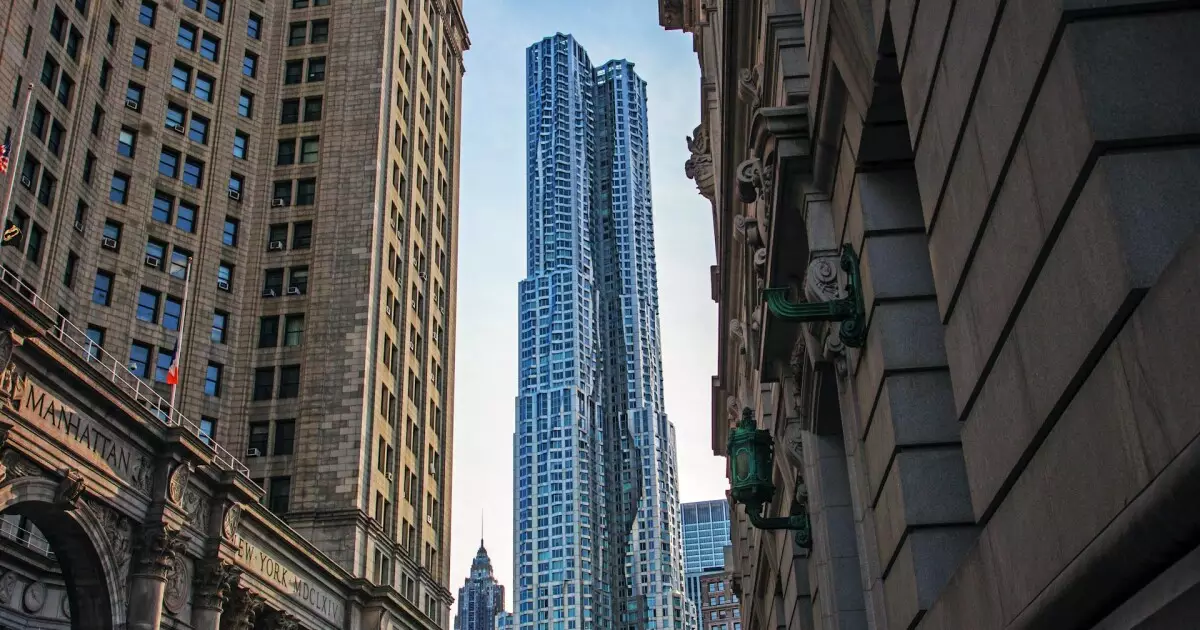The financial moves surrounding iconic real estate reflect broader economic trends, which is evident in Blackstone Inc.’s recent decision to refinance $550 million in municipal debt related to 8 Spruce Street, a notable 76-story residential tower in downtown Manhattan. Designed by acclaimed architect Frank Gehry, this building stands out not only for its architectural significance but also for its complex financial history. The refinancing, orchestrated through the New York City Housing Development Corporation (NYC HDC), embodies the intricate relationship between urban development, economic recovery initiatives, and investment strategies.
Originally known as Beekman Tower, 8 Spruce Street has a storied past that extends back to its initial construction efforts spearheaded by Forest City Ratner. The project gained traction in the wake of the 9/11 terrorist attacks, which had a profound effect on Lower Manhattan. To stimulate recovery, the federal government initiated the Liberty Bond program in 2002, allocating $8 billion in tax-exempt financing to bolster rebuilding efforts. Of this, a significant portion was designated for the World Trade Center site, and the program enabled several high-profile constructions, such as the headquarters for Goldman Sachs and Bank of America.
Interestingly, Forest City Ratner received approval for the last wave of Liberty Bonds in 2008, demonstrating the program’s lasting impact even years after its inception. The tower itself, showcasing an undulating stainless steel and glass façade, was completed in 2011, embodying both resilience and innovation in its design.
In 2022, Blackstone acquired 8 Spruce for $930 million, a significant investment given the building’s stature and market dynamics. The recent refinancing of $550 million, which includes $204 million in tax-exempt securities, showcases the strategic use of economic tools designed for urban recovery. While the previous securities were set to expire with an interest-only period concluding in November 2024, the new issuance is uniquely structured to enhance the property’s financial viability.
Blackstone’s announcement emphasizes that the refinancing reflects strong demand, indicative of the high-quality nature of the tower. This success could also be attributed to the increasing desirability of luxury urban accommodations, especially as 8 Spruce boasts outstanding amenities, including a fitness center, golf simulator, and panoramic city views.
The structure of the refinancing aligns with modern financing techniques known as commercial mortgage-backed securities (CMBS). The issuance is designed with multiple classes of fixed-rate debt, providing a layered approach to risk and return. This multifaceted structure allows for differentiated priorities in payments, where taxable debts assume precedence over the tax-exempt bonds.
Furthermore, Moody’s rating system has assigned various classifications to these debt classes, suggesting a spectrum of risk all the way from Aaa to Baa3. Understanding these ratings becomes vital for investors looking to assess potential returns amidst fluctuating economic conditions.
Occupancy and Market Demand
As of August, the occupancy rate for 8 Spruce Street stood impressively at 97%, with an average monthly rent of $6,015—a testament to the building’s appeal in a competitive Manhattan market. Lesser known, but equally important, is the building’s appraised value, which has risen significantly since Blackstone’s acquisition, now estimated at $802 million.
Such figures not only solidify 8 Spruce’s role as a luxury residential option but also indicate the demand-driven factors contributing to its ongoing financial success. Blackstone, with its experienced portfolio management, seems well-positioned to leverage this demand, enhancing their investment returns while also contributing to the overall vitality of the Manhattan housing market.
As we analyze the ongoing financial developments surrounding 8 Spruce Street, it becomes clear that such properties are more than mere real estate. They represent economic trends, recovery efforts, and the interplay between investment foresight and urban rejuvenation. Blackstone’s refinancing strategy encapsulates this multifaceted relationship, ensuring that 8 Spruce continues to thrive as a residential icon while contributing to the vibrant landscape of New York City. Moving forward, the implications of this financial maneuver will serve as a case study for urban developers and investors alike, showcasing the complexities and opportunities within the New York real estate market.

